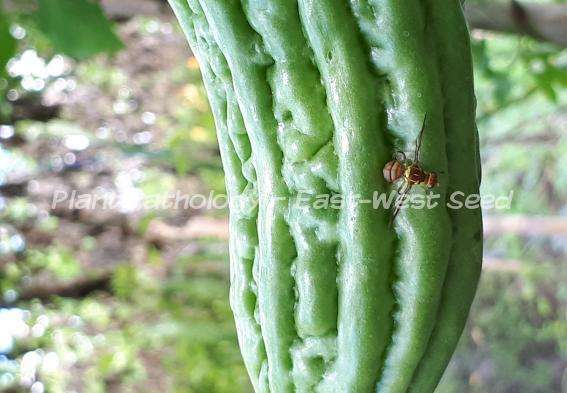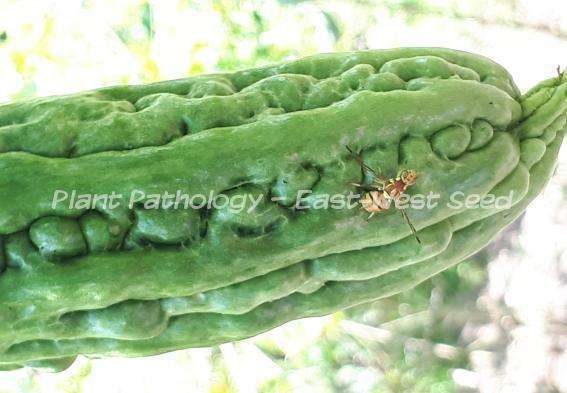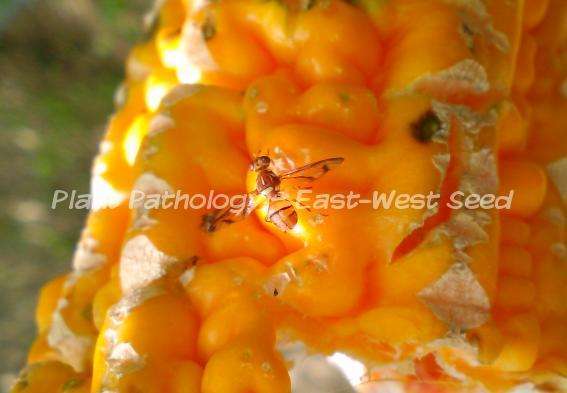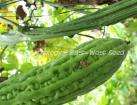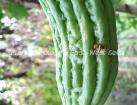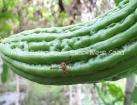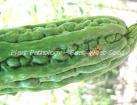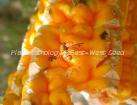| Species: | |
 |
Bactrocera cucurbitae (Coquillett) |
| Common name: | |
 |
Melon fly |
| Damaging stage: | |
 |
Maggots/larvae |
| Crops Affected: | |
 |
Cucurbits, solanaceous and legumes |
| Characteristic Damage: | |
 |
Attacks flowers, stem and fruits. |
 |
Eggs are deposited inside the fruits and tissues around the oviposition site become necrotic. |
 |
Eggs are hatched into maggots which live and develop inside the fruit, internal feeding causes yellowing and decomposition/rotting of the fruit. |
| Management and Control: | |
 |
Monitor the area regularly. |
 |
Maintain good field sanitation. |
 |
Wrap the fruits with newspaper, paper bag or polyethylene sleeves to prevent females in laying eggs. |
 |
Suppress male population by using attractants (pheromones) like cue lure (4-(p-acetoxyphenyl)-2-butanone) or to methyl eugenol (4-allyl-1,2-dimethoxybenzene). |
 |
Spray neem seed kernel extract to deter oviposition. |
 |
Apply insecticides such as dimethoate (e.g. Perfecthion®), fenthion (e.g. Lebaycid®) and diazinon (e.g. Basudin®, Parapest®). |
| References: | |
| https://en.wikipedia.org/wiki/Fruit_fly | |
| http://www.cabi.org/isc/datasheet/17683 | |
| https://en.wikipedia.org/wiki/Melon_fly | |
To view other diseases, click here.
Need more help? Ask the Doctor.




